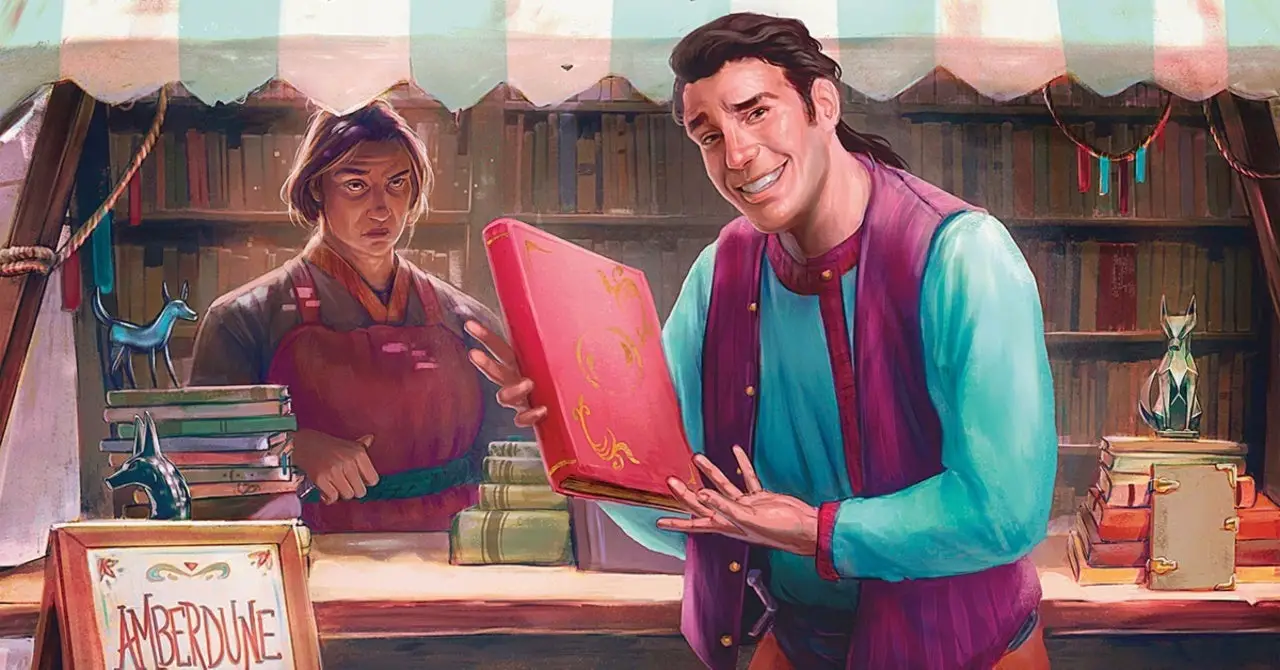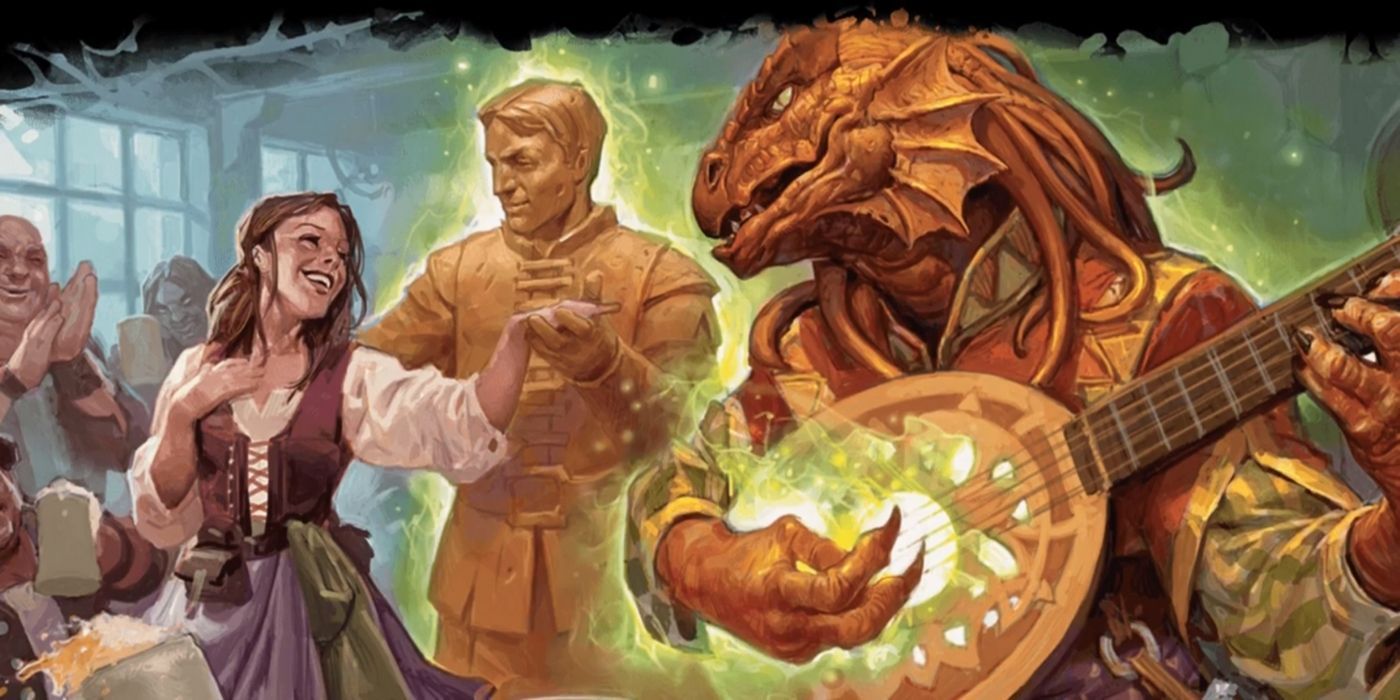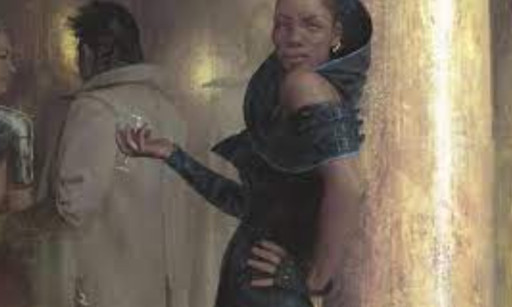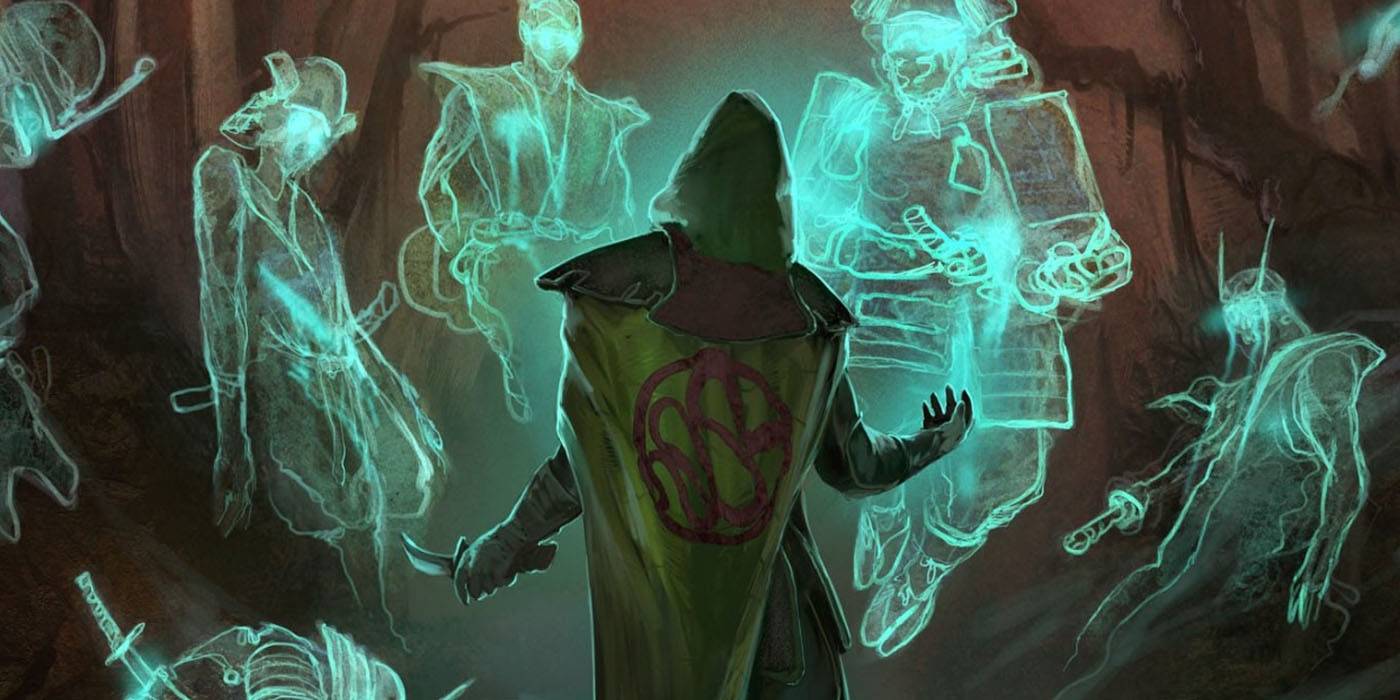
It’s a terribly kept secret in my circles that I love bards. Bards are dynamic and versatile. They can do a little bit of everything, but may not always be the best at all of it. Jack of all trades, y’know?
Here is a breakdown of all the official bardic subclasses, and how they might be in play.
8. College of Valour

These bards perpetuate tales of heroics, in remembrance of great fighters and inspiring others who hearken to reach the same heights of exceptional accomplishments as those heroes in legend.
Bonus Proficiencies in medium armour, weapons and shields ensures this bard is protected when they enter the foray of battle for glory and valour, while imparting Combat Inspiration allows allies to add any held inspiration die to their attack damage or AC.
These bards specialise in making attacks and, too, gain an Extra Attack, though without the fighting style of the college of swords bard. Though, at 14th level, when expending an Action to cast a spell, this bard may use his bonus action to make a weapon attack.
So how does this subclass play?
This bard is a standard bard for the most part, not really benefiting from his Valorous inclination. His combat prowess is mediocre at best.
Having the bardic Inspiration give a boost to AC is an interesting feature, but it doesn’t make up for what this bard lacks, or could have had in another subclass.
Mediocre. Lacklustre. You are not the next Forgotten Realms Idol.
Details about the College of Valor Bard
7. College of Eloquence

The bardiest bards to ever have barded, these bardsterds are exceptional bardsters of oration and charisma, persuading, inspiring, and deceiving as bards are wont to do.
This subclass doubles down on the base bard mechanics, empowering Bardic Inspiration and granting mastery over Charisma based skills. With Expertise and the Silver Tongue ability, you wouldn’t ever roll less than a 17. This only gets better when your proficiency bonus increases, with it being at least a 20 when you reach level 13.
This bard’s ability to instil doubt into foes and with Unsettling Words as a bonus action is a useful addition preamble to casting spells which require saving throws, giving it a negative modifier equal to your bardic inspiration die roll.
Unfailing Inspiration is a massively useful skill. No longer will your Bardic Inspiration go to waste. This ability assures that Bardic Inspiration is never expended when used and the check still fails.
Compounding that, Infectious Inspiration allows the bard to pass on the Inspiration when a check succeeds, encouraging the entire party to use it and pass it on, granting them, at 14th level when you unlock this ability, a free D10 to use.
So how does this subclass play?
Silver Tongue is almost exploitative, though well within the mechanics of the game. Choosing to shine in a specific skill (or 2) is completely appropriate, but will leave this bard lacking in other areas when talking isn’t an option anymore.
Unfailing and Infectious Inspiration is a beautiful mechanic which gives great utility to the bard’s core feature, Bardic Inspiration. Watching it sit and hop between allies makes this bard feel like a conductor on the battlefield, but consumes the bard’s reaction. Typically, this bard wouldn’t take many attacks of opportunity, and having this available as a reaction frees up the bard’s bonus and main actions.
Details about the College of Eloquence Bard
6. College of Glamour

College of Glamour bards weave mystical mantles from the fey realm over themselves, enthralling those around them. These are experts at charming and assuading foes and friends to do their bidding.
The Mantle of Inspiration grants an alternate use of the Bardic Inspiration die, invigorating allies with temporary HP and allowing them to use their reactions to move on the battlefield. Without a specified duration, Temporary Hit Points last until a long rest (PHB 198). When the bard gains 5th level Font of Inspiration, allowing them to restore their Inspiration Die on a short rest, it would be useful to quickly boost allies with temporary hit points before taking the rest to get extra utility out of this feature.
The Enthralling Performance allows you to charm a captivated group which listens to the performance for 1 minute, turning them into insta-fanboys and eager to assist with your endeavours. Though the charmed party wouldn’t do anything harmful (unless it is naturally violently inclined), they are mostly at your service for the remainder of the hour, prepared to extol thine virtues and dissuade any who would hinder your goals.
You may only do this once before you need a rest, and in combat it’s completely unviable as even a last resort. It is situational, buta neat trick to have up the sleeve for a bard who wishes to mount movements to move mountains.
The Mantle of Majesty is an interesting ability for bards. By first charming a target, and then assuming the mantle of majesty, you can unfailingly command a single target to do your bidding, though at the cost of casting any other spells on your turn. It’s an effective weapon in the arsenal of the bard, enabling it to essentially keep a single foe from making any moves, or interrupting key individuals in a group battle, though, without the luxury of charming each one of them, that becomes difficult. Still, being able to cast Command without expending spell slots, andasa bonus action, is nothing to be scoffed at.
So how does this subclass play?
Mantle of Inspiration is a useful tool for buffing up hit points and enabling allies to traverse the battlefield, suitable for the beginning of combat and getting everybody into position.
Enthralling performance is mostly situational and never a guaranteed success, but the ability to charm multiple people without expending a spell slot, and not alerting them to the use of magic, makes up for the minute it takes to cast it.
Mantle of Majesty is exceptionally effective at debilitating strong, single foes, granted you are able to charm them first.
Details about the College of Glamour Bard
5. College of Lore

College of Lore Bards elects to specialise them in magical ability and skill sets while eschewing their mediocre ability to wield weapons. These are masters of magical flexibility and developing skills.
The Bonus Proficiencies the bard gains will round their skill checks out nicely, as well grant them extra expertise in areas which they do not already specialise in. Overall, this is just a useful trait making a better bard.
Cutting Words demoralise opponents, allowing the bard to make them ineffective at the things they wish to do. This is a reaction which expends the Bardic Inspiration die to subtract the roll from the opponent’s ability check, attack roll, or damage roll. It grants the extra option from standard Bardic Inspiration, which empowers allies, to rather directly demoralise enemies.
Additional Magical Secrets allows the bard to gain its 10th level feature at 6th level, doubling the total amount of magical secrets the bard will learn. At 6th level, these will only be third level spells, but there are plenty of useful spells a bard might choose to supplement their playstyle.
Peerless skill allows you to instantaneously consume one of your Bardic Inspiration dice to add the roll to your ability check without expending Bonus Actions. It’s a neat trick in the performer’s repertoire that makes them that much better at being skilled.
So how does this subclass play?
The College of Lore is a good all-rounder, but typical of the bard, not excellent in any specific degree. That’s not necessarily a bad thing, as these bards are much better able to adapt to circumstances.
Additional Magical Secrets expands the bard's abilities beyond the bardic spell list, allowing them to specialise in certain magical abilities or round out the party in areas where it’s lacking.
It’s not an incredibly exciting subclass to play, but a good solid cornerstone of any party makeup.
Peerless Skill and Bonus Proficiency makes the bard good at skill checks, a reigning champion among the Jacks of All Trades.
Details about the College of Lore Bard
4. College of Creation

The Song of Creation is sung by these bards, who weave that mystical power of the cosmos into physical manifestations.
Mote of Potential adds an extra punch to the use of Bardic Inspiration, giving better ability checks, doing area damage, or granting temporary hit points. It’s a neat addendum to the basic bardic inspiration that proves to be effective in any situation.
Performance of Creation allows the bard to sing into the physical realm an item that might prove situationally useful. This is a one-time free use ability, after which the bard expends 2nd level spell slots to re-use it until a long rest. It is an excellent utility ability which allows you to will into creation greater objects as your bard becomes more practised. This ability is later fully developed with creative crescendo, allowing the bard to manifest multiple objects not limited by the gold cost of such items.
The bard uses an Animating Performance to bring false life to inanimate objects, such as statues or swords, or tankards or knives. Any object that is Large or smaller is subject to this ability, which allows it to do hefty force damage and obey the bard’s command.
So how does this subclass play?
The Mote of Potential makes the bard a considerable ally on the battlefield, consistently empowering with bardic inspiration.
Performance of Creation is a powerful ability in its own right, ensuring the bard always has the right tool for the job, but combined with the Animating Performance can make a powerful summon to aid him in combat, or a dutiful servant to cater to his needs.
Details about the College of Creation Bard
3. College of Whispers

These scarce omens are ones of intrigue and plot, who stalk among the shadows weaving mystical tales of deceit. This bard is designed for political games, deceitful and cunning.
Psychic Blades allows the bard to do additional damage to the target’s psyche on a successful hit, though with a limited pool of class resource die, it is best used sparingly. This ability is more appropriate for assassinations, in which the extra psychic damage, in addition to regular weapon damage, might swiftly kill a target.
Words of Terror allows you to spend a minute manipulating and deceiving an individual into a fear of a certain character, planting the seeds of paranoia and doubt. It is a situational; ability that wouldn’t often allow the circumstances to crop up unless you are in a campaign filled with political intrigue.
Mantle of Whispers allows you to capture a dying foe’s shadow, to don as your appearance for one hour. To all the world, you appear and behave as this person did, drawing on their surface level memories and impersonating them. Again, it is situational, but a better alternative to the Disguise Self spell or the Disguise Kit, though it can only be used once per long rest.
Shadow Lore is a monument to the deceitful among bards. The bard whispers lowly, and may convince an opponent that they know a terrible secret about them. In this state of fear, that opponent is willing to do most things to prevent this blackmail from slipping.
So how does this subclass play?
This bard is not a combat bard. He is geared towards doing quick executions rather than prolonged fighting.
A role-play heavy campaign may benefit greatly from including this bard in the party. With a morally ambiguous baseline to begin with, this bard is a proficient liar and infiltrator, an expert at manipulation that would put even your ex to shame.
Details about the College of Whispers Bard
2. College of Spirits

Dallying in the otherworldly, legends of lore, and folktales of fame, these bards dabble in the mystic arts, conjuring spirits and communing with powerful forces.
The Guiding Whispers ability grants the bard the Guidance Cantrip, and extends its range to 60 feet. This is an interesting alternative to the Bardic Inspiration ability. In comparison, the Bardic Inspiration is a bonus action that expends a class resource die for a greater bonus, but the guidance cantrip takes an action, is a cantrip, and grants only a D4 bonus. This supplements any druid, cleric or artificer in the party that already has this cantrip, and assuming the bard develops it to free up actions for the other spellcasters is not a fair summation of the bard’s role in the party.
Its use shines out of combat, where the action economy isn’t particularly critical, and the added range is immensely useful for encouraging allies from the back of the auditorium when it’s their time to perform.
The Spiritual Focus furthers the bard’s immersion in the occult, and channels bardic spells through mystical objects, imbuing healing and damaging spells with powers from beyond. At 6th level, an extra D6 goes a long way.
If you ever wanted to be a fortune teller in the world of D&D, but divination wizardry isn’t to your taste, then the Tales from Beyond feature is certainly an ability to take interest in. This bard listens to the spirits, and rolls a die, and hearkens a story they can impart.
The tale they relay has different effects, dependent on what they rolled on their Bardic Inspiration, and becomes situational at times, but it can at least be retained until the bard takes his next rest. At 14th level, the bard rolls two dice and can choose which tale they’d like to hear, or in the case of rolling the same number twice, pick from any tale on the list.
Spirit Session at level 6 allows the bard to conduct a seance to glean the secrets of necromancy and divination, allowing them to learn a spell up to a level they can cast, equal to the number of participants in the ritual, from either school. It’s just wildly fun, and grants the bard access to more damaging and healing spells to use in conjunction with their spiritual focus.
So how does this subclass play?
Guidance is generally a very good cantrip, and the bard doubles down on that, making his friends better at the things that they do from afar.
Spiritual Focus’ added D6 comes in handy for the bard’s damage output and party support, but won’t make an incredible difference at much higher levels. It’s mostly cosmetic in the later game.
Tales From Beyond is Wild Magic for Bards, but better. The bard can choose when to use them, much like the Divination Wizard’s portent, but to varying effect. When Bardic Inspiration die improve, so do the tales you have access to. Very fun indeed.
Spirit Session is a fun way to go wild with spells. A 9th Level bard can cast fifth level spells, so theoretically can learn powerful spells they wouldn’t normally have access to, such as contagion. This is somewhat minimised by the Magical Secrets a bard learns, but the option to change it once per long rest makes it incredibly diverse.
Details about the College of Spirits Bard
1. College of Swords

Bards from the College of Swords embrace their martial prowess, dipping between offensive front line fighters and falling back to supportive roles.
The Bonus proficiency in medium armour and the scimitar gives this bard a nice boost into the wild world of combat, allowing him to don more protective gear while maintaining his ability to cast spells. In addition, if the bard is proficient with a weapon, it may be used as his spell focus. This grants greater combat agility, allowing him to swap between weapon and magical attacks on a whim.
Adopting a fighting style grants greater combat prowess as well, allowing the bard to either the duelling or dual-weapon styles. The ability to make a second attack as a bonus action and add your ability modifier to the second attack greatly increases the direct damage this bard can do, but eats at his action economy.
The Blade Flourish is the key element of this bard, allowing him to use his Bardic Inspiration die in combat to do extra damage, grant himself additional AC, or shove foes and follow them. Using a class resource die in this manner is very expensive, but at 14th level the bard can use a D6 instead and expend no class resources.
A further Extra Attack, this bard loves to hit things, and at this point reaches a stage in which they are a dynamic element of the party, able to adapt to combat situations when spell slots are expended, or fall back and grant support when the tides of battle shift.
So how does this subclass play?
Action economy is very difficult to manage until you reach 14th level. It makes for an interesting play style in which you need to strategically determine the best course of action for the character. This is somewhat mitigated in having your weapon be your spell focus, but is strenuous for the most part.
Blade flourishes aren’t phenomenal, and essentially heavily reliant on your limited class resource. When you roll well, however, it’s very satisfying.
These bards aren’t great at combat, and they only inject themselves into the line of fire when trying to stab things. They’re less squishy than most spellcasters, but still squishy enough for it to be worrisome.
This is my favourite class to play. It is diverse and challenging enough to keep it interesting.
Details about the College of Swords Bard
You may also be interested in:
- The Best D&D Classes (Ranked from Worst to Best)
- Top 25 Best D&D Villains of All Time
- 32 Most Interesting Facts About Dungeons and Dragons!
- 25 Best D&D Games for PC That Every Fan Must Play!
- The 10 Best DnD Streams
- Most Powerful D&D Dragons For Adventurers To Defeat
- Top 10 Best DnD Campaign Ideas
- Top 5 DnD Most Useful Languages
- D&D Top 10 Most Damaging Spells That Obliterate Foes
- Top 15 Most Powerful D&D Spells
- The Best D&D Race for Every Class
- Top 10 D&D Best Quests That Are Amazing
- Top 10 D&D Best Utility Spells
- [Top 10] D&D Best Zombies
- [Top 10] D&D Best Simple Weapons For Killing Foes
- [Top 10] D&D Best YouTube Channels
- [Top 5] D&D Best Tank Builds That Can Withstand Massive Damage
